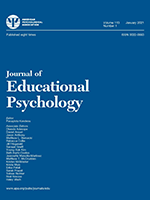Forfattere
Hanne Næss Hjetland, Arne Lervåg, Solveig-Alma Halaas Lyster, Bente Eriksen Hagtvet, Charles Hulme & Monica Melby-Lervåg.
Abstract
The two major determinants of reading comprehension are language comprehension and decoding, but prior studies of the development of reading comprehension from an early age show inconsistent results. To clarify these inconsistencies we report a 6-year longitudinal study (starting at Age 4 years) where we control for measurement error and track the development and interrelationships between a range of predictors of reading comprehension (language, decoding, and cognitive skills). We found two main pathways to reading comprehension: a highly stable language comprehension pathway (reflecting variations in vocabulary, listening comprehension, grammar, and verbal working memory) and a less stable code-related pathway (reflecting variations in phoneme awareness, letter knowledge, and rapid automatized naming). Early language comprehension at Age 4 years is strongly related to code-related predictors (phoneme awareness, letter knowledge, and rapid naming), and influences decoding indirectly through these constructs. Early oral language skills predicted initial levels of reading comprehension and its growth between the ages of 7 and 9 years. Strikingly, language comprehension and decoding, together with their interaction and curvilinear effects, explain almost all (99.7%) of the variance in reading comprehension skills at 7 years of age. Our study adds to prior knowledge in several important ways and provides strong support for an elaborated version of the simple view of reading (Gough & Tunmer, 1986).
